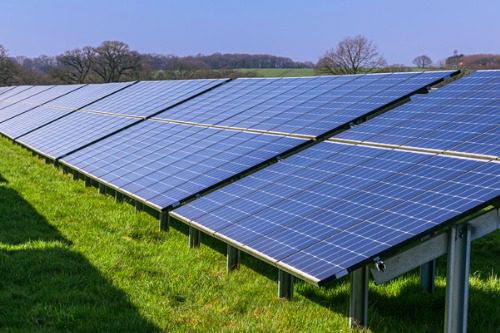Top 5 risks of solar energy

Authored by Allianz
The use of green energy is crucial in the fight against climate change and it’s clear that renewable energy sources will gain prominence over the coming years as technology improves. This is a very good thing.
However, the risks associated with the use of renewables are often overlooked and this poses serious problems for insurers.
In this article we’ll explore the top 5 risks of solar energy, and highlight why there’s a need for stronger industry standards in the renewables field.
1. Severe weather
It’s sadly ironic that the solar farms which have been introduced as a way to mitigate the effects of climate change are now falling victim to the same severe weather conditions that they are designed to alleviate.
We’re seeing an increase in the number of extreme weather events across the globe and these can spell disaster for solar farms. In 2021, Storm Arwen wreaked havoc at a solar farm near Wolviston, smashing hundreds of glass solar panels and damaging rows and rows of photovoltaics.
In extreme weather, solar panels can operate as lifting surfaces making the panels vulnerable to being blown away, so it’s important that these are securely tethered. Panels are in danger of being smashed by falling debris that’s carried by the wind. If solar farms are struck by lightning it can result in damage to modules, cables and electrical equipment which can cost many thousands of pounds to repair or replace.
2. Maintenance problems
Micro-cracking, or micro-fractures, can occur in solar panels when panels are subject to strong wind forces. The silicon used is very thin and when it expands and contracts, or when it’s damaged by wind or falling debris, it can crack, making the panel less efficient at absorbing light and storing energy. Dust and water may also travel into the cracks, further harming the effectiveness of the panels.
There is also an issue with the longevity of solar panels. Solar power installations should be lasting 40-50 years, but due to weather damage and issues with materials and construction, they are currently only lasting for 20. It’s clear that unless these issues are resolved, it’s going to be difficult for solar farms to reach their energy producing potential.
3. Theft
Theft is also an issue for solar farms as they are often located in remote, rural areas where police response times are slow, so a robust approach to security is essential. Panels and cables offer a relatively easy, and high value target for thieves, and in 2019, £900,000 worth of solar panels were stolen from sites in Wales, resulting in serious financial losses for the companies operating them.
4. Planning issues
As with all new potential developments, solar farms are subject to planning regulations and these can be difficult to navigate. Ground mounted solar PV projects over 50kw should ideally be located on brownfield sites, or on agricultural or industrial land, avoiding cropland where possible. It’s also important that solar farms do not adversely impact the visual aspect of landscapes and so should be flat and well-screened. They should not negatively affect domestic properties or road access either.
This means that planning applications for solar farms can take a long time to be approved, and construction times can be longer due to the location and terrain. These delays can incur additional business costs and could involve higher insurance premiums given the type of land that is being utilised for the development.
It’s also important that due diligence is observed when processing planning applications for solar farms. Building on flood plains for example could mean that the solar farm is at risk of flooding or water damage. Building near archaeological sites also presents risks which would be reflected in higher insurance premiums.
5. New floating solar panels
Floating solar panels are solar panels that are mounted on a structure that floats on water and, in the main, are a great innovation as they don’t take up valuable land space and can be up to 15% more efficient than terrestrial farms.
However, as it’s a new technology, these types of solar farms require specialist equipment and therefore cost more to construct and install than similar sized farms that are located on solid ground. They can also have issues with moisture and water droplets collecting inside the cables which reduces the amount of sunlight hitting the panels, making them less efficient. Water ingress is also problematic as it can lead to major power losses and potential safety hazards, again increasing the risks associated with this type of renewable.
Looking to the future
As solar power gains prominence over the coming years it’s important that the standardisation of testing, energy conversion, use of materials, and health and safety practices are applied consistently across the sector if we want to reduce the risks involved in the harvesting of green energy, and see these installations achieve their full potential.





